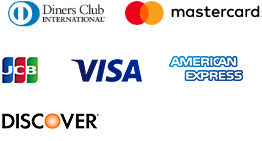Pepsi-Lipton Brisk
Key decision Barnard and Tamaro had to make regarding the Brisk Brand rebuilding was about choice of the advertising campaign after the Super Bowl. The main issue for them was whether to use traditional tool of impacting the audience and choose the prime time on TV or try to focus on the target audience for stronger influence and organize the viral campaign in the internet.
One of the possible explanation can be that based on personal attitude brand depend heavily on association of the audience. Despite the originality of the ads shot in 1990th, there are no strong association between “Brisk” and “youth. Also, it should be said that in the 1990th, it was Lipton Brisk, and, therefore, was strongly associated with Lipton, which was not cool.
Brisk’s major competitor is Arizona and Snapple. Comparing their spending for traditional advertising, it should be noticed that Snapple, which was behind the Brisk, spent the most (more than 3 millions) while Arizona and Brisk spent almost nothing.
Speaking about the presence of Brisk in social media, it is possible to say that comparing with Arizona, Snapple and Sobe it was almost not presented. Its competitor’s social media campaigns had much more followers (for example Brisk’s campaign “Make your mark” had 3 72b FB likes while Arizona’s “Weekly Photo Contest” had 926 000 FB likes).
Pepsi’s main goals for 2011 Brisk campaign were the following. First one was the reintroduction the Brisk brand. The main targets were the male millennials and Hispanics. Second was to switch the Arizona consumers to Brisk. The third was generating the positive buzz for the brand.
The main reason is that attracting the persons that search for something new, cool and like to experiment with the test and brands, the key factor in these attempts is to add male nature to the brand because the new will attract the female audience in any case. Female character of the new will never attract the male audience.
The general goal for social media was to build a brand in internet. It was necessary to enlarge the number of fans in social networks to achieve this goal. The main targets were Facebook, where fan base had to be increased from 3700 up to 500 000, and YouTube, where one million was planned.
First reason of hiring the Mechanism as advertising agency consisted in the fact that they offered the most suitable ideas for the campaign, for example, the usage of the idea of claymation. Another reason was their capability to do all kind of work that reduces the time, which usually are necessary for coordination between agencies responsible for different parts of the project.
The growth of online video viewing gives for advertisers such opportunities as decreasing of the advertising spending comparing with the traditional media, especially using the viral advertising. Also, it is possible to provide more precise targeting of the audience. It creates the opportunity for more interaction, as well as to support the higher level of interest to the brand.
One of the ways for reducing costs and providing greater involvement of the audience is the viral advertising. The main idea consists in posting the ad in the social media (Facebook or YouTube) and then with the minimal promotional activity it will spread with consumers, who will share it with their acquaintances.
Mekanism process for engineering virality can be explained briefly as choosing the persons, who have an influence on the some audience, establishing cooperation with them and then information dissemination with their help. Such a way supports the higher level of credibility of ads.
From the 4 proposed conceptions, the third one should be chosen. Creative characters allow us to build a pleasant association with celebrities and emphasize the personal validity of everybody’s choice. The usage of the viral campaign are more preferable, because except the precise targeting it provides us with stable and permanent presence in social media. Such a present is vital for successful development of the brand.
